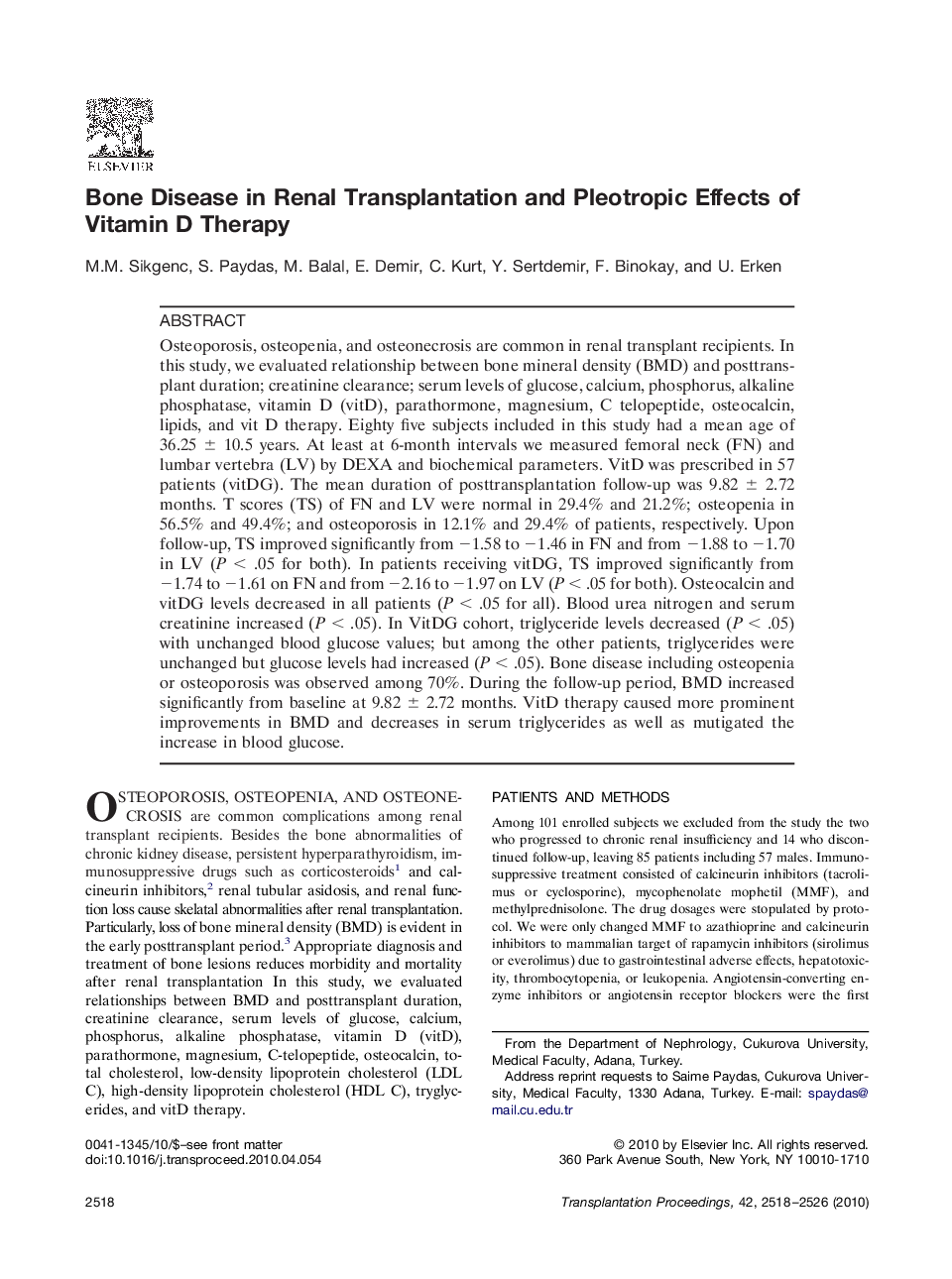| Article ID | Journal | Published Year | Pages | File Type |
|---|---|---|---|---|
| 4259428 | Transplantation Proceedings | 2010 | 9 Pages |
Abstract
Osteoporosis, osteopenia, and osteonecrosis are common in renal transplant recipients. In this study, we evaluated relationship between bone mineral density (BMD) and posttransplant duration; creatinine clearance; serum levels of glucose, calcium, phosphorus, alkaline phosphatase, vitamin D (vitD), parathormone, magnesium, C telopeptide, osteocalcin, lipids, and vit D therapy. Eighty five subjects included in this study had a mean age of 36.25 ± 10.5 years. At least at 6-month intervals we measured femoral neck (FN) and lumbar vertebra (LV) by DEXA and biochemical parameters. VitD was prescribed in 57 patients (vitDG). The mean duration of posttransplantation follow-up was 9.82 ± 2.72 months. T scores (TS) of FN and LV were normal in 29.4% and 21.2%; osteopenia in 56.5% and 49.4%; and osteoporosis in 12.1% and 29.4% of patients, respectively. Upon follow-up, TS improved significantly from â1.58 to â1.46 in FN and from â1.88 to â1.70 in LV (P < .05 for both). In patients receiving vitDG, TS improved significantly from â1.74 to â1.61 on FN and from â2.16 to â1.97 on LV (P < .05 for both). Osteocalcin and vitDG levels decreased in all patients (P < .05 for all). Blood urea nitrogen and serum creatinine increased (P < .05). In VitDG cohort, triglyceride levels decreased (P < .05) with unchanged blood glucose values; but among the other patients, triglycerides were unchanged but glucose levels had increased (P < .05). Bone disease including osteopenia or osteoporosis was observed among 70%. During the follow-up period, BMD increased significantly from baseline at 9.82 ± 2.72 months. VitD therapy caused more prominent improvements in BMD and decreases in serum triglycerides as well as mutigated the increase in blood glucose.
Related Topics
Health Sciences
Medicine and Dentistry
Surgery
Authors
M.M. Sikgenc, S. Paydas, M. Balal, E. Demir, C. Kurt, Y. Sertdemir, F. Binokay, U. Erken,
